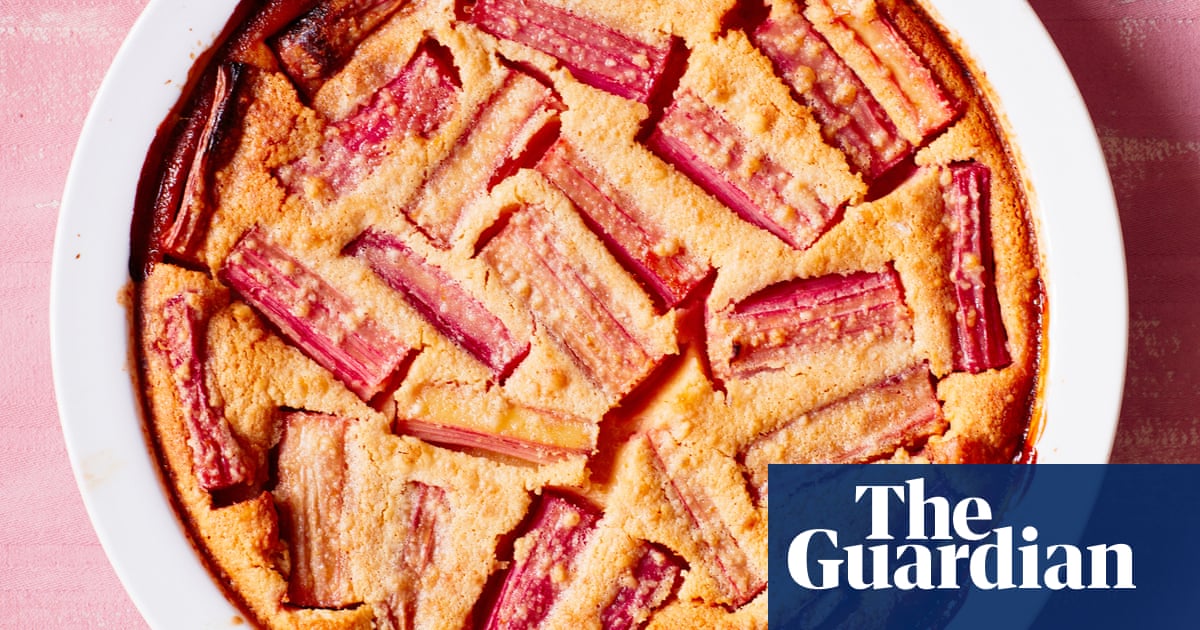With the spring bounty still some way around the corner, plug the hungry gap by baking seasonal blood orange and vivid rhubarb into this crusty pud

March is a false friend. Happy that February’s greyness has passed for another year, I kid myself that the weather will soon soften. Then that the markets will magically burst forth with exciting new produce after months of roots and pulses.
But, alas, we still have a little way to go until spring. There are a few ingredients that excite me in this otherwise lacklustre landscape of produce. Here, the vivid pink of forced rhubarb and the scarlet stains of blood orange transform a very simple pud.
Rhubarb and blood orange clafoutis
The orange and rhubarb provide wonderful sharp accents against the sweet, pillowy clafoutis crust.
Prep 10 min
Cook 1 hr
Serves 6
300g rhubarb, topped, tailed and cut into 5cm pieces
50g caster sugar
1 blood orange
For the batter
3 eggs + 1 yolk, at room temperature
80g caster sugar
150ml double cream
90ml whole milk
45g plain flour, sifted
45g ground almonds
1 pinch salt
Heat the oven to 190C (180C fan)/gas 6. Spread out the rhubarb pieces in a single layer in a 30cm ovenproof pan or gratin dish. Sprinkle with the sugar, then cover with the orange zest and juice. Put in the oven for 10 to 12 minutes, until it just begins to feel tender to the touch, then leave to cool.
Meanwhile, blitz the eggs, egg yolk, sugar, cream and milk with a hand blender or whisk, then fold in the flour and almonds, along with a small pinch of salt. Pour this batter over the cooled rhubarb, then put in the oven for 35-45 minutes, until it is set with a slight wobble in the middle.
Eat warm or at room temperature with a little extra cream.
And for the rest of the week
Blood oranges add delicious acidity to otherwise wintry salads or grills; use them in dressings, or segmented, or chuck whole slices into trays of roast chicken or vegetables. Rhubarb makes any pudding more joyful. You could also try pickling it to add a splash of colour to weekend lunches.
Read more: www.theguardian.com









![[Video] How to get rid of bed bugs in Toronto](https://www.thehowtozone.com/wp-content/uploads/2019/10/maxresdefault-2-100x70.jpg)


